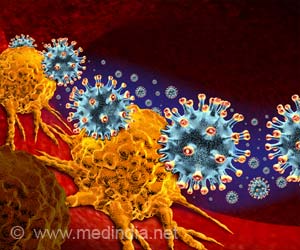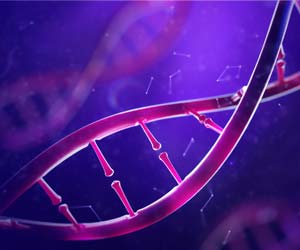It is well-known that cancer has a mighty big bag of tricks that it uses to evade the body's natural defense mechanisms and proliferate.

In the latest issue of the Journal of Biological Chemistry, the team at the VA San Diego Healthcare System and the University of California, San Diego, reports an important advance in the understanding of the molecular machinery needed for lymphatic cell growth.
"In many carcinomas, lymphatic vessels grow and remodel around and sometimes within tumors. This allows tumor cells to go upstream to the lymph nodes," explains assistant professor Mark Fuster, who led the study. Once tumor cells hitch a ride to the lymph nodes, the disease can be more difficult to fight. "We were trying to understand the mechanisms that turn on the growth of lymphatic vessel cells in the laboratory."
To better understand how tumors get lymphatic vessels to construct an entry ramp for cancerous cells, Fuster's team began by looking at a much-studied lymphatic stimulatory protein that is often over-produced by tumors. The protein migrates from the tumor to a layer of cells within lymphatic vessels known as the endothelium. The tumor-produced protein is officially known as vascular endothelial growth factor C, or VEGF-C for short (pronounced "vej-eff-cee").
"The growth factor VEGF-C lands on a special receiving molecule, or receptor, on the surface of the lymphatic endothelial cells, sending a signal that says it's time for the endothelial cells to replicate and send offshoots," Fuster says. But the team was curious as to whether VEGF-C and its receptor were getting any help from nearby molecules to make that happen. "After all, if there were other players in the mix, that might mean there are other possible drug targets," Fuster explains.
The team focused on a glycan, or sugar, known as heparan sulfate. After some initial clues indicated that destroying the unique sugar on lymphatic endothelial cells would inhibit VEGF-C-dependent growth signaling, Fuster and his team dug in to figure out more about heparan sulfate's role.
Advertisement
Xin Yin, a postdoctoral research fellow, and Scott Johns, a research associate in the laboratory, both lead authors on the paper, carried out a variety of studies to examine how silencing enzymes in the cell that are responsible for putting the sugar together might alter various cell-growth behaviors and affect VEGF-C's ability to activate its receptor.
Advertisement
In the setting of cancer, it is thus possible that the presence of heparan sulfate is important for tumor-spurred lymphatic vessel growth: This not only identifies a potential target for anti-cancer drugs, Fuster says, but it may also offer insights about how to stimulate lymphatic vascular growth in diseased parts of the body that, conversely, need lymphatic vessels for normal circulatory and immune functions.
Still, though, Fuster emphasizes that more work remains to be done, because how exactly heparan sulfate interacts with VEGF-C and its receptor remains unclear: "Identifying the importance of heparan sulfate in the growth of living lymphatic systems and identifying its possible importance in mediating the functions of multiple lymphatic growth factors simultaneously remain important considerations for ongoing and future research."
Source-Eurekalert











